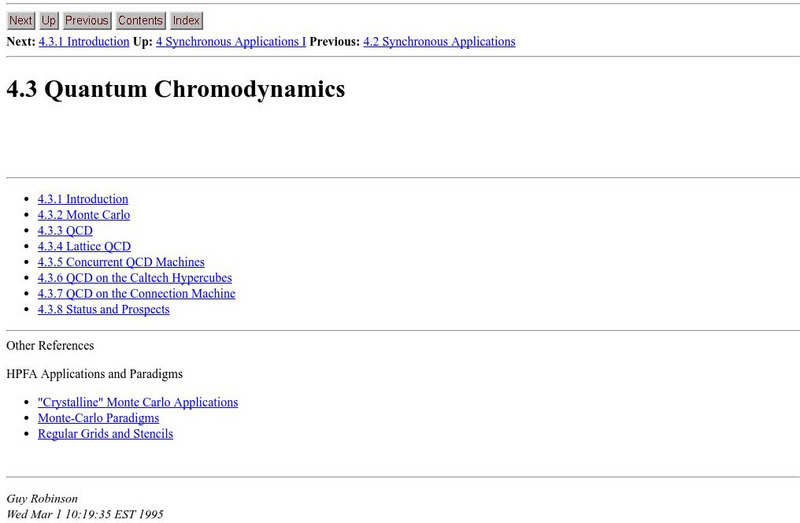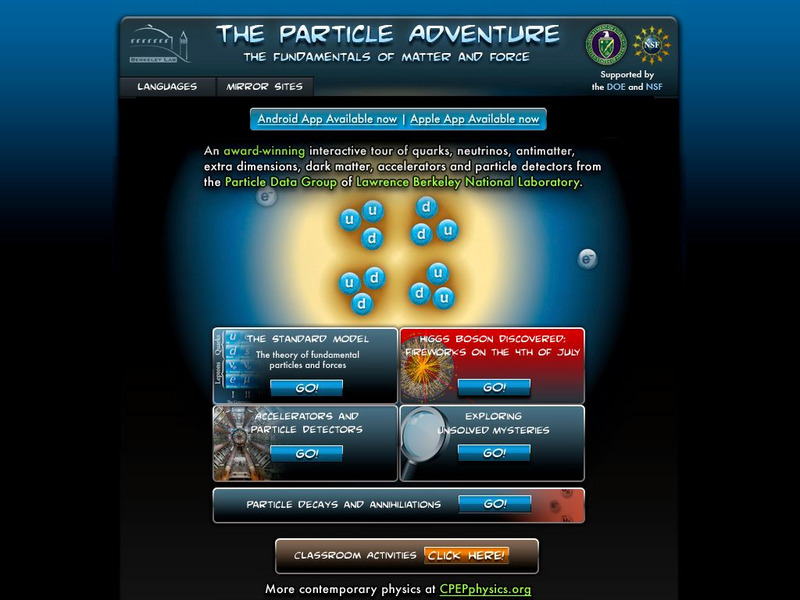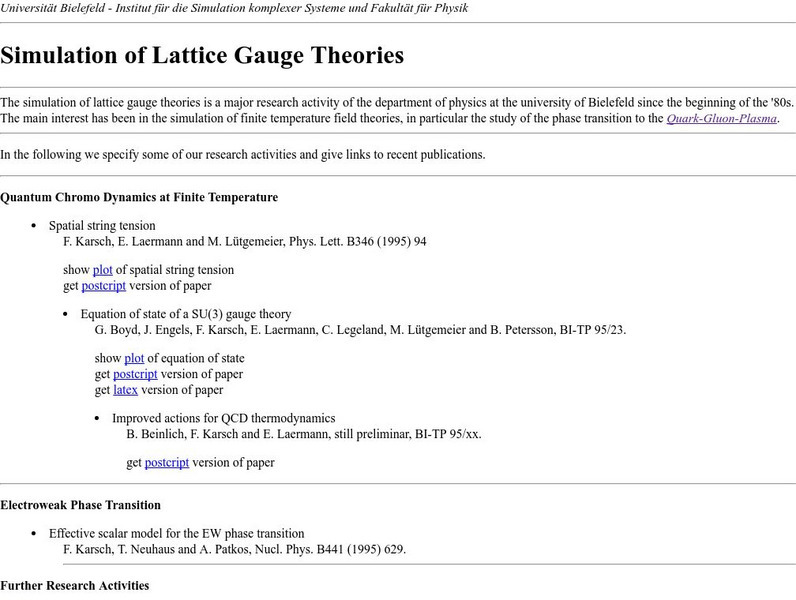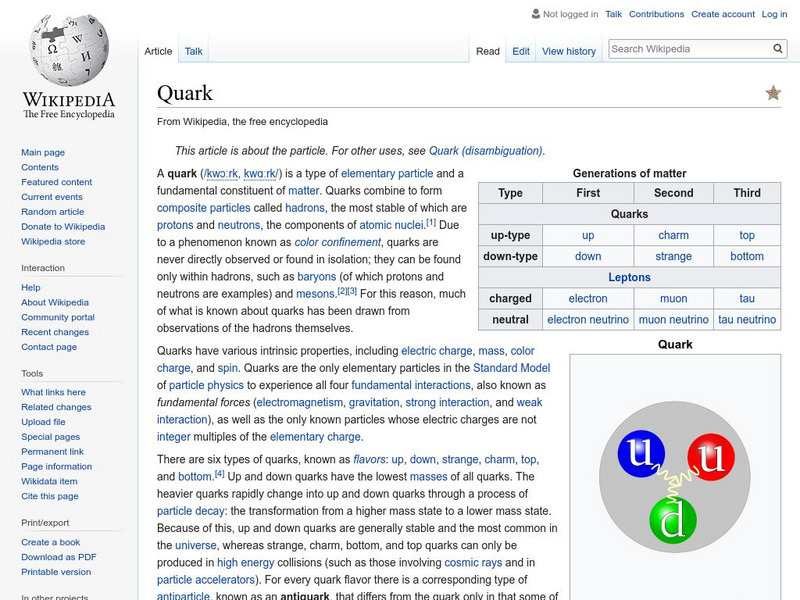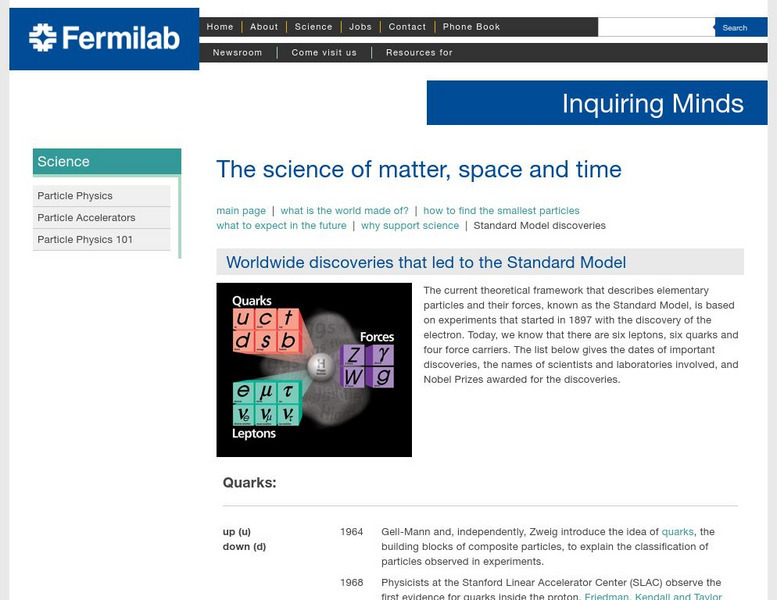Other
Netlib: 4.3 Quantum Chromodynamics
An online textbook containing an introduction to quantum chromodynamics (QCD). This is a proposed theory about what causes quarks and gluons to form hadrons. Article contains a description of lattice QCD, an approximation to QCD that is...
Lawrence Berkeley National Laboratory
Berkeley Lab: The Particle Adventure
Visit this site for an interactive tour of the atom and all aspects of particle physics. View the animations available with almost every description on this site. A great place for the fundamentals of particles and forces including a...
Georgia State University
Georgia State University: Hyper Physics: Hadrons
This site defines hadrons and their characteristics. There are links to explanations and more detailed information about interactions and composition.
Other
Bielefeld Univ.: Simulation of Lattice Gauge Theories
This site from the Bielefeld University has links to papers and plots dealing with gauge theory.
Wikimedia
Wikipedia: Quark
This site from the encyclopedia Wikipedia provides an in-depth description of quarks describes different characteristics about them. Mentions how they are different from leptons, the theory of quantum chromodynamics, and the process of...
Other
Fermilab: Worldwide Discoveries That Led to the Standard Model
A thorough review of subatomic particles and the people that discovered them. Each particle has its own link for additional information.
Ducksters
Ducksters: Physics for Kids: Elementary Particles Quarks, Bosons, Leptons
Kids learn about elementary particles in the science of physics such as quarks, bosons, fermions, leptons, photons, and gluons.
Other
Fermilab: What Are the Basic Forces Between Particles?
Get an introduction to the four forces that interact between atomic particles. With the help of a simulation you'll see how building reconstruction would be affected without each of the forces.


